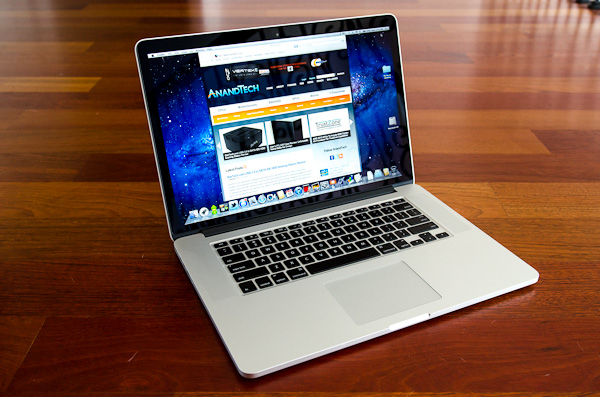The next-gen MacBook Pro with Retina Display Review
by Anand Lal Shimpi on June 23, 2012 4:14 AM EST- Posted in
- Mac
- Apple
- MacBook Pro
- Laptops
- Notebooks
What to Buy
I mentioned earlier that Apple mitigates risk in its designs much like a CPU maker. It’s always considered good practice to decouple major architecture changes from process node jumps (Intel’s famous tick-tock cadence embodies this). Apple similarly tries to alternate major changes to the industrial design from significant internal component changes. Although Ivy Bridge and Kepler are all new, the former is quite similar to Sandy Bridge while the latter is really no different than integrating any other discrete GPU. The more dramatic silicon departure comes with Haswell next year, and I suspect that’s why we got the rMBP this year.
In our performance investigations I mentioned that compared to an upgraded Sandy Bridge MacBook Pro (high clocks with SSD), you won’t see tremendous performance gains from the rMBP. A quick look around Apple’s website actually shows not even a single CPU bound performance comparison between the rMBP and last year’s MacBook Pro.
The logical thing to do, if you’re the owner of a recent (2010/2011) MacBook Pro, is to wait until next year at the minimum. Haswell should bring a significant performance increase (particularly on the processor graphics front) and you’ll get it in the same chassis as what you see today.
Most users however don’t upgrade annually. If you have an older MacBook Pro, the rMBP offers all of the benefits of last year’s Sandy Bridge upgrade but in a much better package, and with vastly improved thermal characteristics. If you fall into this group, the upgrade is a no-brainer. I won’t lie, the next two years are going to be tough. Haswell is looking very good, and if Intel can pull off 14nm on time, Broadwell will be even more impressive from a graphics standpoint. You can always make the argument to hold off on an upgrade as there’s almost always something better around the corner. In my opinion you really can’t go wrong picking any of the next three years to upgrade.
Should you decide to buy today, which model should you get?
As I mentioned before, the $2199 configuration is near-perfect in my opinion, save for the 256GB of NAND flash. Apple unfortunately won’t let you upgrade storage capacity on the base MacBook Pro with Retina Display so you’re left with two options: 1) live with the 256GB and hope someone will build an aftermarket SSD in the not too distant future, or 2) buy the $2799 model. While it’s quite likely that we’ll see third party SSDs for the rMBP, I seriously doubt you’ll find one with Samsung’s PM830 controller.
I do think 256GB is livable, it’s just that 512GB is so much more comfortable.
Apple has simplified things by not allowing multiple GPU options, and the CPU options are pretty cut and dry.
If you can live with 256GB of storage, the $2199 configuration is fine. Otherwise I’d go with the upgraded $2799 model.
The question of whether or not you should opt for the 16GB memory upgrade really depends on what you do with the system and how long you expect to use it. Without any form of socketed memory expansion, you’re stuck with the amount of memory you order on the system. Thankfully 8GB is healthy by today’s standards and likely will continue to be so for the next couple of years. If your present day workloads require 8GB of memory, then the 16GB option is a must have. If you’re looking at 16GB purely as future-proofing, chances are you’ll run into processor (or storage) limitations before you feel held back by memory. That being said, if you want to be kind to the next owner, ticking the 16GB box won’t hurt.












471 Comments
View All Comments
tipoo - Thursday, January 1, 2015 - link
Hm, I get way higher max CPU and GPU temps than tested here, with the Haswell one instead of the IVB in the article. I'm consistently just a few degrees short of 100C when gaming.